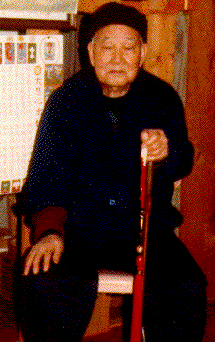
T.T. (Tung Tsai) Liang was a government official in charge of all British controlled ports of China’s eastern seacoast during the 1940’s. He had been living a hard life involving drugs, alcohol and sexual activity, which was associated with the life of a high-ranking government official in Shanghai at that time. This lifestyle eventually caught up with him. Liang fell seriously ill, and was eventually hospitalized with pneumonia, liver infections, and severe gonorrhea. At age 45, his doctors gave him about two months to live. Not wanting to die, Liang immediately began learning tai chi. Within six months he had recovered most of his health. He realized that his wealth and position resulted in a lifestyle which negatively affected his health, so he resigned. Reforming his ways, he became a teacher of tai chi. After moving to the United States, T.T. Liang became one of the most famous masters of the last century. He went on to live another 57 years, passing away at the the age of 102 years old, which he attributed to his tai chi practice. He remained vibrant and healthy throughout the second half of his century long life.
T.T. Liang’s book “T’ai Chi for Health and Self-Defense” (Vintage Press, 1974) was the first book on tai chi which I had read on the subject. It was a nice overview of the philosophy and theory from a traditional perspective. I also appreciated his integration of music into the performance of the form. In many ways, tai chi is much like a beautiful dance or ballet, which can be enhanced by music (although there are some mental benefits to doing tai chi in silence, which I will be discussing in my forthcoming book “Mindful Exercise: Tai Chi for Mind, Body and Spirit”). Traditionally tai chi was performed in silence, in part for martial training, and in part as a meditation. T.T. Liang was told that doing tai chi to music was not traditional. He replied that in the old days, teachers did not have CD players. One of his early teachers was kung fu and tai chi teacher Wei Hsiao Tang, who had been a disciple of Yang Lu Chan (the father of Yang style tai chi, over 150 years ago). Wei Hsiao Tang was also one of Duke Y.M. Cheng’s teachers (my instructor in the arts of tai chi and kung fu). Wei Hsiao Tang featured many traditional elements related to tai chi as a powerful martial art.
Returning to the effects of tai chi on Liang’s health, traditional perspectives focus on harnessing and nurturing Qi, translated by Traditional Chinese Medicine practitioners as “Vital Energy.” This also ties into Metarobic theory, as described and documented in my book “Mindful Exercise: Metarobics, Healing, and the Power of Tai Chi” (YMAA Publications, 2018). Directly translated, the first definition of Qi in most Chinese/English dictionaries is “air” or oxygen. And it is from the metabolism of oxygen from which we get our energy. T.T. Liang was dying from pneumonia, liver infections, and severe gonorrhea. Research documents and supports a Metarobic effect on the production of t-lymphocytes which battle infection, as well as for enhancing physiological function and efficiency. This enhanced physiological function can help maximize all aspects of the healing processes of the body, explaining why mindful forms of exercise focused on relaxation and the breath can benefit so many chronic conditions. For full citations and research on my work with Metarobics, as well as over 50 case stories, please refer to my book. Aside from research on an understanding of the measurable and scientific basis of how and why these exercises work (not to discount traditional perspectives), I also discuss dosage – the importance of pace and the amount of time spent doing these exercises, which is also an important factor. To go from a death sentence of two months at age 45, to living to 102 years of age, supports the dramatic health benefits of tai chi. And T.T. Liang is but one of many who faced imminent death, and reversed their condition using tai chi and/or qigong. See the Metarobics Facebook Page for their stories. Some of these teachers had been given as little as two to three weeks to live before they turned to tai chi, in a last-ditch effort to live. And it worked!
- Dr. Gryffin
(For more information on the life of T.T. Liang, see "Steal My Art: he Life and Times of T'ai Chi Master T.T. Liang" by Stuart Alva Olsen, and the Victoria Taiji Academy. Photo credit:The Victoria Taiji Academy).
 RSS Feed
RSS Feed